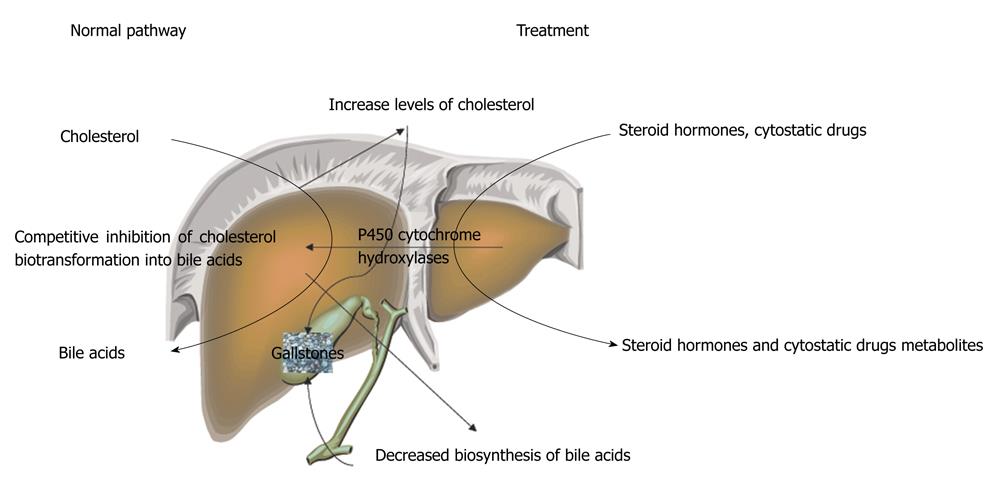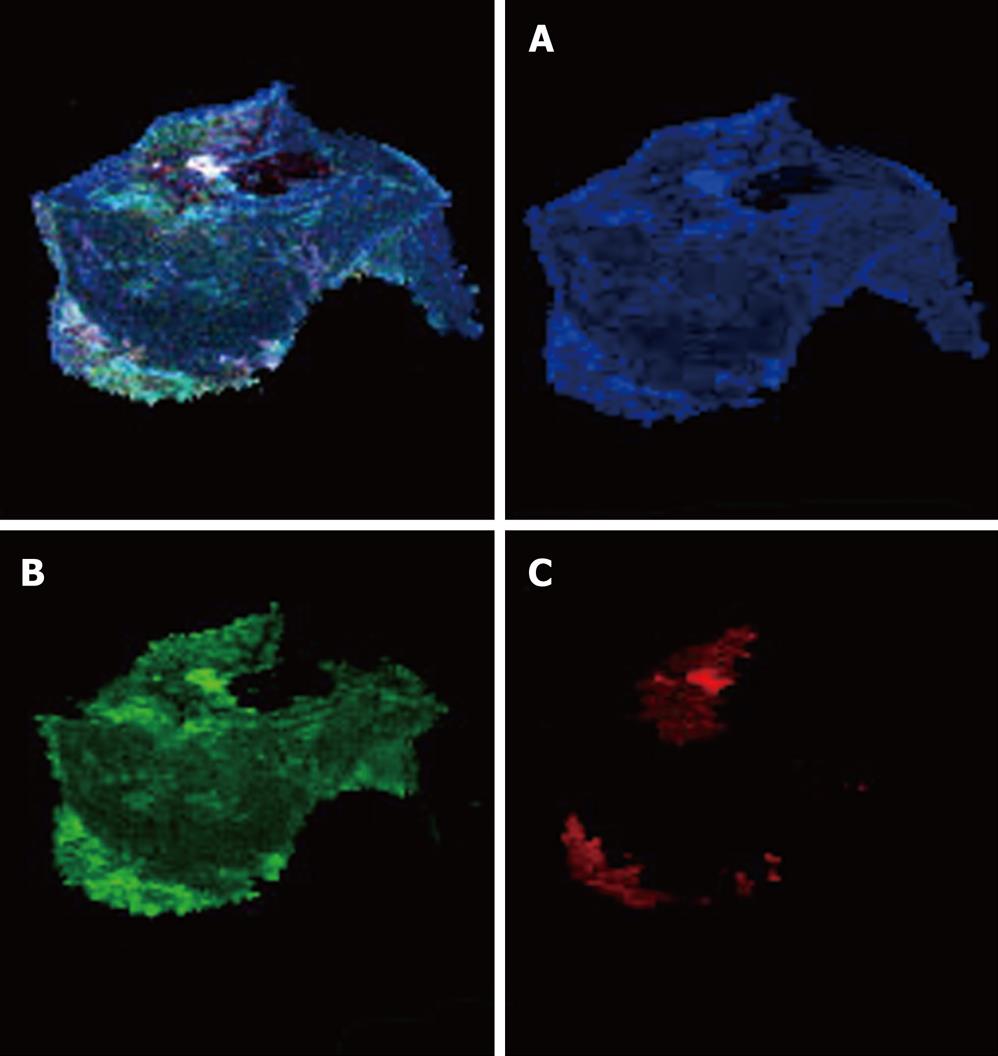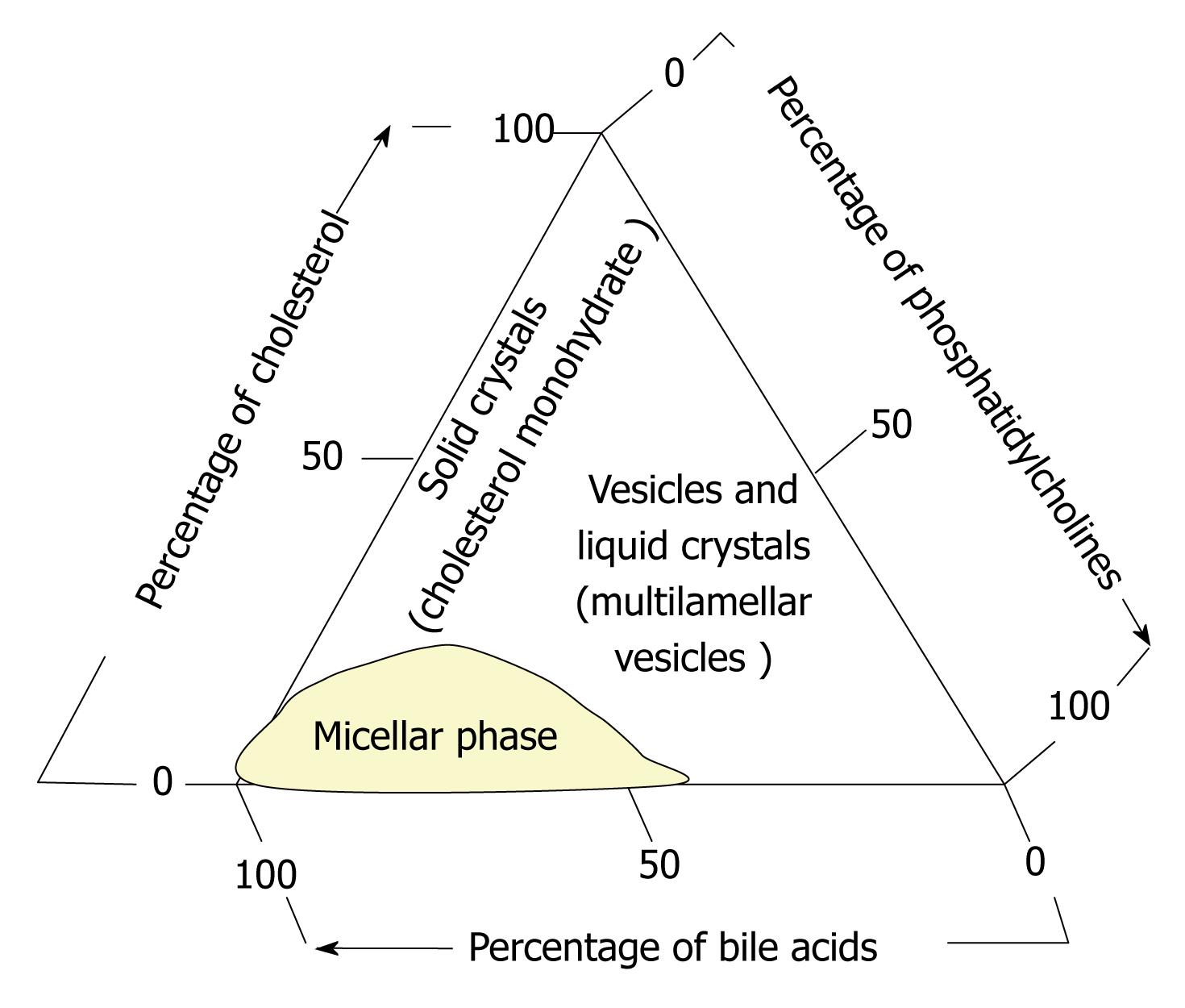Copyright
©2012 Baishideng Publishing Group Co.
Figure 1 Diagram of steroid hormones-induced inhibition of cholesterol catabolism.
Figure 2 Color cathodoluminescence scanning electron microscopy micro images of cholesterol gallstones.
The application of the computer program “Adobe Photoshop” (software) and color contrast by the color cathodoluminescence scanning electron microscopy (CCLSEM) technique permitted the determination of cholesterol, bilirubin and protein within the stone. CCLSEM micrographs of cholesterol (A), protein (B), bilirubin (C) were obtained after color separation[100]. The major components of the gallstones under examination were cholesterol (A) and protein (B). They were detected all over the entire surface of the scanned gallstone while rare bilirubin insertions (C) were seen only at the periphery of the gallstone.
Figure 3 Formation of molecular structures in the system containing bile acids, lecithin and cholesterol.
Cholesterol-supersaturated vesicles can stick together and agglomerate to form multilayer (liposomal) liquid-crystal structures. When gallbladder contractility is decreased, liposomes may be converted to solid cholesterol monocrystals. BA: Bile acids; L: Lecithin; Ch: Cholesterol.
Figure 4 It shows a diagram of gallstone formation by taking into account the above impaired bile production and excretion processes.
Figure 5 The phase state of the main bile components (cholesterol, phosphatidylcholines, bile acids) in the triangular coordinate system[114].
- Citation: Reshetnyak VI. Concept of the pathogenesis and treatment of cholelithiasis. World J Hepatol 2012; 4(2): 18-34
- URL: https://www.wjgnet.com/1948-5182/full/v4/i2/18.htm
- DOI: https://dx.doi.org/10.4254/wjh.v4.i2.18













